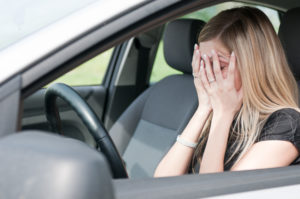Situational Specific Phobia : Accident Phobia
Accident phobia has been studied most extensively in relation to accidents involving motor vehicles. It has been established that thirty-eight per cent of survivors of car crashes subsequently develop severe phobic fear and avoidance of car travel, which has had a significant effect on their normal life.
Symptoms of accident phobia
Although it is unusual for car journeys to be avoided completely, accident phobics will often only travel when strictly necessary. Also, the journey may only be undertaken at a particular time of day, for example, when traffic conditions are light. Accident phobics experience considerable anticipatory anxiety before the journey and are highly fearful while in the car. Some find it very difficult to be passengers and most constantly give the driver instructions.
It is not unusual for accident phobics to make considerable adjustments to their life to avoid car travel. This can include such extreme measures as moving house or even relinquishing a job and, in most cases, the person’s normal enjoyment of outings, hobbies, holidays and so on, is considerably restricted because of the effect on mobility. It is possible that similar levels of phobic fear and avoidance may occur in those who have been in accidents involving buses, coaches and trains.
The recently developed Accident Fear Questionnaire of American Psychiatry appears to reliably differentiate between the two conditions and indicates that phobic fear develops independently of injury, pain or depression caused by the accident. There is, however, some evidence that a person/ s psychological make-up might predispose them towards developing accident phobia.
Treatment of accident phobia
Treatment for accident phobia is in a process of continual development and refinement. Initial cognitive therapy is needed, aimed at helping the person to realize that he is a survivor, and that there is no reason to suppose that an accident that has happened once will be repeated. Therapy using the person’s imagination and the use of video-taped material may be useful. Eventually, the person is encouraged to embark upon exposure therapy by becoming a car passenger – something that most phobics find extremely difficult. The final stage, if the person is a driver, is for him to start driving again and a refresher instruction course may help in this respect.

